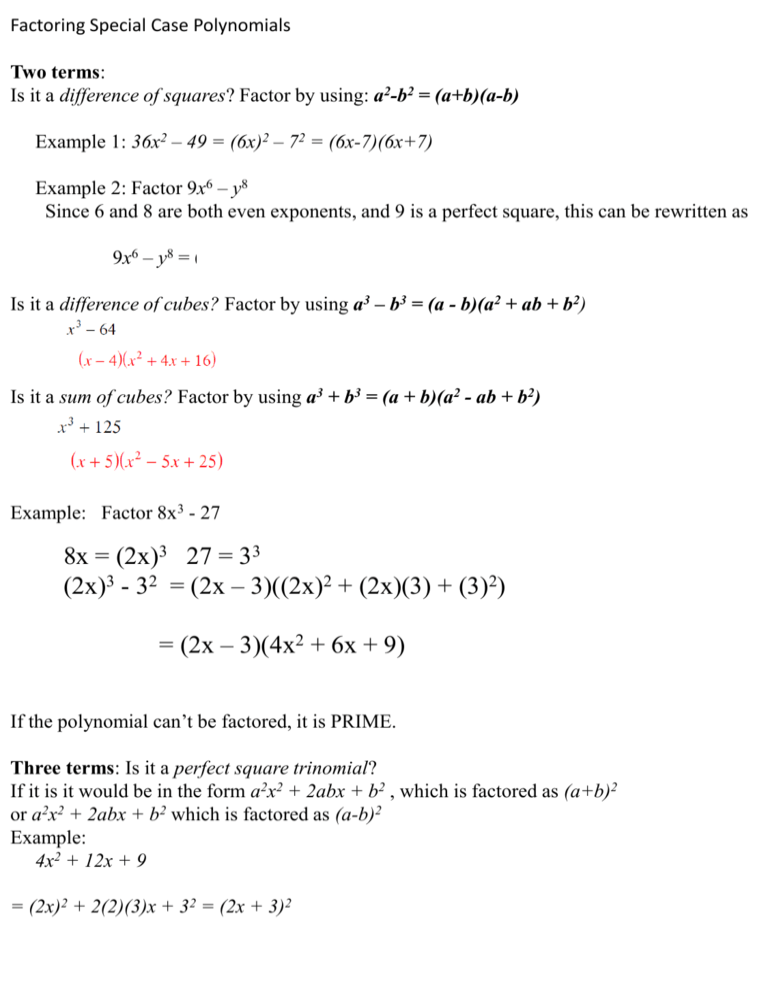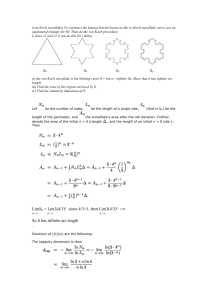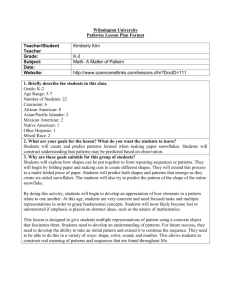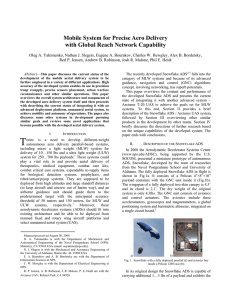5.3-4 Factoring ax2 + bx + c, Factoring Strategy
advertisement

Factoring Special Case Polynomials Two terms: Is it a difference of squares? Factor by using: a2-b2 = (a+b)(a-b) Example 1: 36x2 – 49 = (6x)2 – 72 = (6x-7)(6x+7) Example 2: Factor 9x6 – y8 Since 6 and 8 are both even exponents, and 9 is a perfect square, this can be rewritten as 9x6 – y8 = (3x3)2 – (y4)2 = (3x3 – y4)(3x3 + y4) Is it a difference of cubes? Factor by using a3 – b3 = (a - b)(a2 + ab + b2) Is it a sum of cubes? Factor by using a3 + b3 = (a + b)(a2 - ab + b2) Example: Factor 8x3 - 27 8x = (2x)3 27 = 33 (2x)3 - 32 = (2x – 3)((2x)2 + (2x)(3) + (3)2) = (2x – 3)(4x2 + 6x + 9) If the polynomial can’t be factored, it is PRIME. Three terms: Is it a perfect square trinomial? If it is it would be in the form a2x2 + 2abx + b2 , which is factored as (a+b)2 or a2x2 + 2abx + b2 which is factored as (a-b)2 Example: 4x2 + 12x + 9 = (2x)2 + 2(2)(3)x + 32 = (2x + 3)2 AIM: Understanding how to factor quadratic functions when a > 1 The SNOWFLAKE METHOD Setting up the snowflake for… ax2 + bx + c a •c ax ax b Fill the missing spaces of the snowflake with the two numbers that when multiplied give you “a • c” and when added together give you “b.” Let’s use the snowflake method to factor 3x2 + 8x +5 Step 1: Set up your snowflake. Step 2: Fill in the missing spaces. Step 3: Reduce the fractions on either side of the snowflake and put in proper form. 3*5 = 15 3x 5 3 8 ANSWER: ( 3x + 5)(x + 1) 1 3x 1 Use the snowflake method to factor 4x2 + 14x + 12 Snowflake method will not work if you don’t factor out the GCF! **Step 0: Take out a factor of 2! 2(2x2 + 7x + 6) Step 1: Set up your snowflake. Step 2: Fill in the missing spaces. Step 3: Reduce the fractions on either side of the snowflake and put in proper form. 1 2*6 = 12 2x 2x 4 3 2 7 Don’t forget the GCF in the answer! ANSWER: 2( x + 2)(2x + 3) Use the snowflake method to factor u4 – 3u2 - 4 This polynomial is a trinomial but is not of degree 2. However, since the degree(highest power) is even, then We can use substitution and make it a polynomial if degree 2. Let x = u2, then x2 = u4 Our substituted polynomial becomes x2 - 3x - 4 Step 1: Set up your snowflake. Step 2: Fill in the missing spaces. Step 3: Reduce the fractions on either side of the snowflake and put in proper form. Step 4: Don’t forget to put your original variable back in your factorization and factor more if necessary! (x – 4)(x +1) Now remember what x is: (u2 – 4)(u2 + 1) -4 -4 1 -3 Can any of these be factored more? Yes. Answer: (u + 2)(u -2)(u2 +1)











